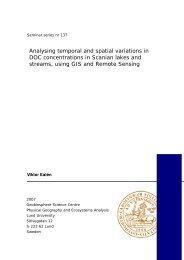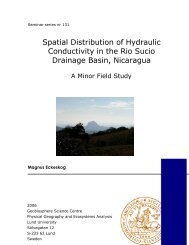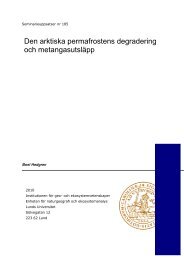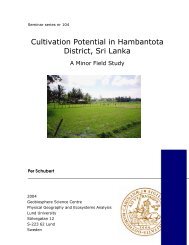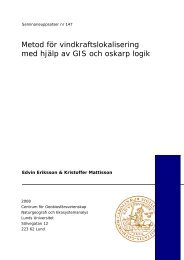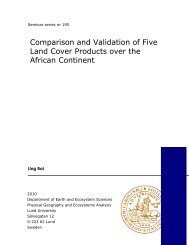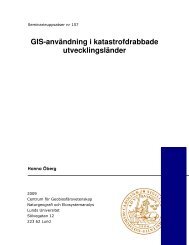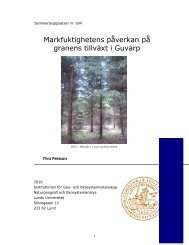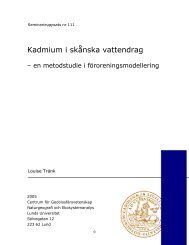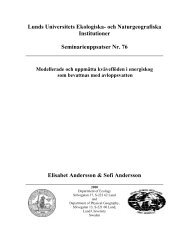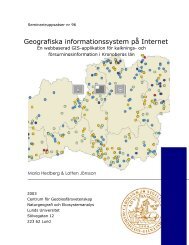Finding Potential Sites for Small-Scale Hydro Power in Uganda: a ...
Finding Potential Sites for Small-Scale Hydro Power in Uganda: a ...
Finding Potential Sites for Small-Scale Hydro Power in Uganda: a ...
Create successful ePaper yourself
Turn your PDF publications into a flip-book with our unique Google optimized e-Paper software.
projects are supposed to be f<strong>in</strong>anced by subsidies from the government, NGOs and aidorganizations, but the rema<strong>in</strong><strong>in</strong>g part must come from the rural population itself. S<strong>in</strong>ce itis hard to quantify these costs, we asked the question <strong>in</strong> a way that gave us <strong>in</strong><strong>for</strong>mation ifthe <strong>in</strong>terviewees had any liquid assets at all to buy electricity <strong>for</strong>. The question does notanswer how much money they have, <strong>in</strong>stead it lets us know if they have any money or ifthey just trade goods or use self-cater<strong>in</strong>g.6.2 InterpolationWhen <strong>in</strong>terpolat<strong>in</strong>g a DEM, the best result is usually received when the data po<strong>in</strong>ts areevenly distributed throughout the <strong>in</strong>terpolation area. Contour l<strong>in</strong>es are practical whenvisualiz<strong>in</strong>g a landscape, but they do not represent the surface <strong>in</strong> a statistically correct ways<strong>in</strong>ce po<strong>in</strong>ts along the l<strong>in</strong>es are over-represented compared with the ones perpendicularto them (Eklundh, 1999). This over-representation of data po<strong>in</strong>ts can lead to terrac<strong>in</strong>gproblems as can be seen <strong>in</strong> Figure 6.1a. A slight occurrence of terrac<strong>in</strong>g can be discerned<strong>in</strong> our DEM (see Figure 5.6) but <strong>in</strong> a comparison to the relief <strong>in</strong> Figure 6.1a we considerour terrac<strong>in</strong>g problems to be of m<strong>in</strong>or importance. Our method is designed to f<strong>in</strong>d a 20-meter height difference over a distance of 100 meters, which means that smallervariations, such as terraces, with<strong>in</strong> this distance are leveled out. Eklundh and Mårtensson(1995) argue that contour l<strong>in</strong>es can only be used if a sophisticated <strong>in</strong>terpolationalgorithm, such as ANUDEM is available, otherwise the terrac<strong>in</strong>g problems will be toopronounced, see Figure 6.1.(a)(b)Figure 6.1 Contour <strong>in</strong>terpolation us<strong>in</strong>g a) Inverse Distance Weighted and b) ANUDEM. Source:Peralvo.In order to create a DEM a number of different techniques are available, such as Krig<strong>in</strong>g,Spl<strong>in</strong>e and Inverse Distance Weighted (IDW) <strong>in</strong>terpolation. In ArcGIS it is not possibleto use contour l<strong>in</strong>es as <strong>in</strong>put data when <strong>in</strong>terpolat<strong>in</strong>g with these methods. To be able touse our received data <strong>in</strong> these methods we either had to digitize a new layer with evenly58



